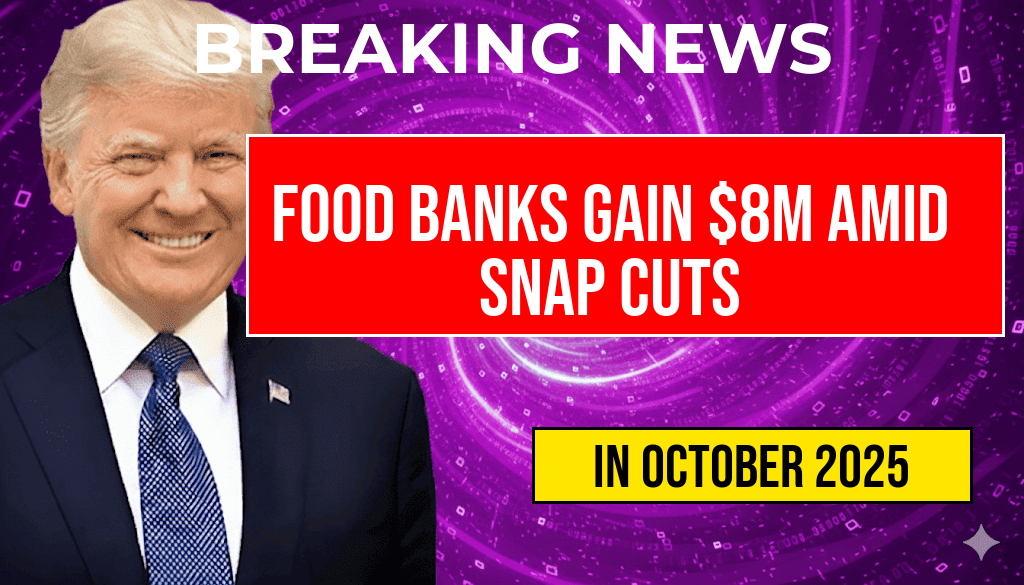Amid recent reductions in the Supplemental Nutrition Assistance Program (SNAP) benefits, several U.S. food banks are set to receive an additional $8 million in funding to address increased demand. The funding boost aims to bolster emergency food assistance as millions of Americans face tighter grocery budgets following federal cuts that have led to an estimated $X decrease in monthly benefits for millions of SNAP recipients. This financial infusion comes from federal relief measures and private sector donations, underscoring the growing need for community-based support as economic pressures persist.
Context of SNAP Reductions and Impacts on Food Security
Federal Cuts and the Rationale Behind Them
The recent reductions in SNAP benefits stem from changes in federal policy aimed at tightening eligibility criteria and adjusting benefit calculations. These modifications were implemented as part of broader efforts to streamline the program and curb perceived misuse, but critics argue they disproportionately affect vulnerable populations. According to the SNAP Wikipedia article, beneficiaries have seen monthly benefits decrease by an average of $X, with some households experiencing cuts of up to 20%.
Effects on Food Security and Community Well-Being
Preliminary data from community organizations indicate a surge in food insecurity, with local food banks reporting increased demand for emergency supplies. The Feeding America network estimates that over 37 million Americans faced food insecurity in 2022, a number likely rising due to recent benefit reductions. Households are forced to make difficult choices, often sacrificing nutrition or relying heavily on charitable food programs to bridge the gap.
Food Banks Respond with Increased Support
Financial Boost and Its Intended Impact
| Source | Amount (USD) | Purpose |
|---|---|---|
| Federal Relief Funds | $5 million | Operational costs and emergency supplies |
| Private Donations | $2 million | Food procurement and distribution programs |
| State Allocations | $1 million | Local outreach and community engagement |
The combined $8 million aims to expand food distribution, purchase fresh produce, and support transportation logistics, especially in underserved rural and urban areas. Food bank associations emphasize that this funding is critical for maintaining the capacity to serve increased numbers of families facing food insecurity.
Community and Private Sector Involvement
Private sector contributions, including donations from corporations and philanthropic foundations, have played a vital role in supplementing federal aid. Companies like Forbes-listed organizations have committed millions to food security programs, recognizing the ripple effect of SNAP reductions on local economies. Local food banks are also engaging volunteers and partnering with farmers to ensure a steady supply of nutritious foods.
Challenges and Future Outlook
Logistical and Operational Hurdles
Despite the influx of funds, food banks face ongoing challenges related to supply chain disruptions, staffing shortages, and the need for cold storage facilities. Additionally, reaching the most vulnerable populations—such as undocumented immigrants or homeless individuals—remains complex, requiring tailored outreach strategies.
Policy Debates and Long-Term Solutions
The debate over SNAP policy continues, with advocates calling for measures that protect beneficiaries from benefit cuts during economic downturns. Policymakers are examining proposals to enhance direct federal support, expand eligibility, and integrate food assistance with employment programs. Experts from organizations like the Brookings Institution suggest that sustainable solutions must include economic recovery efforts and job creation to reduce reliance on emergency food aid over time.
Summary
The recent $8 million funding increase for food banks highlights the urgent need to address the fallout from SNAP benefit reductions. As millions of Americans experience heightened food insecurity, community-based organizations and private partners are stepping up to fill the gap. However, the long-term stability of food assistance programs depends on policy decisions and economic recovery efforts that ensure vulnerable populations have consistent access to nutritious food.
Frequently Asked Questions
What is the reason behind the eight million dollar increase for food banks?
The increase is in response to SNAP reductions, which have decreased available assistance for many families, prompting additional support for food banks to meet the rising demand.
How will the additional funds impact food banks and local communities?
The funds will help food banks expand their capacity, stock more supplies, and better serve families affected by SNAP cutbacks, ultimately reducing hunger and food insecurity.
What are the main reasons for the recent SNAP reductions?
The SNAP reductions are primarily due to policy changes or legislative adjustments aiming to reduce federal spending, which have resulted in decreased benefits for many recipients.
Who are the most affected groups by the SNAP reductions?
Low-income families, seniors, and individuals relying heavily on SNAP benefits are most impacted, facing greater challenges in accessing sufficient food.
What can individuals do to support food banks during this period?
Individuals can donate food or funds, volunteer their time, or advocate for policies that protect and expand SNAP benefits to help those in need.






